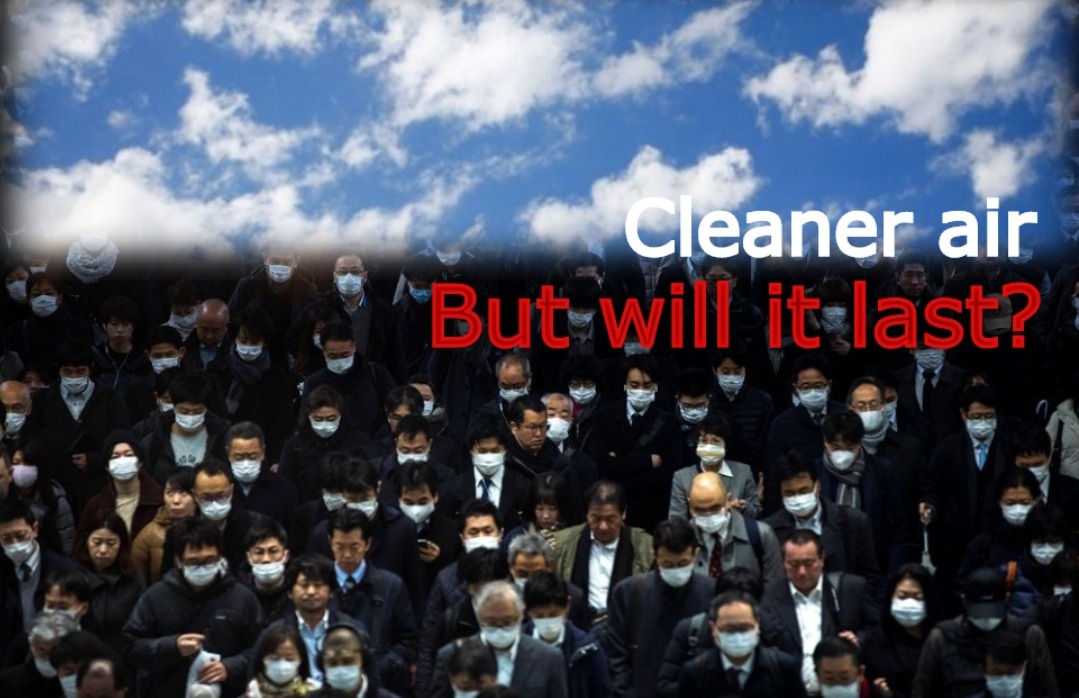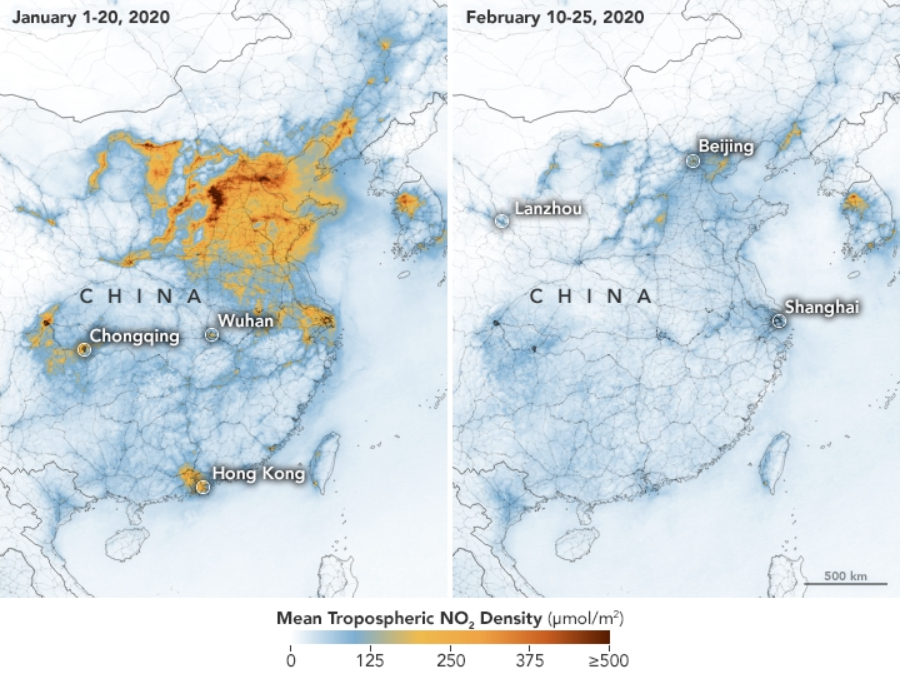Coronavirus restrictions reduce emissions in China but will it last?
NO2 emissions dropped dramatically as Chinese government restricted movement in various parts of the country on top of a quieter-than-usual Lunar New Year.

- Country:
- China
The economic impact of coronavirus COVID-19 is in news ever since the outbreak started but what’s unexpected is the environmental benefits that the impact brings. With factories closed, air travel restricted and cities on lockdown, there is a significant decrease in emissions, making the air cleaner in a way that the governments couldn’t.
NASA in a release on Monday said that pollution monitoring satellites have detected significant decreases in nitrogen dioxide (NO2) over China.
“This is the first time I have seen such a dramatic drop-off over such a wide area for a specific event,” said Fei Liu, an air quality researcher at NASA’s Goddard Space Flight Center.
Liu is talking about the NO2 reduction that started from Wuhan and gradually spread across China. Wuhan is the infamous epicenter of the outbreak and is under lockdown since January 23, adding to the millions of people that are under some sort of quarantine in the rest of the country, making it one of the largest such action in human history.

(Image Credit: NASA)
The map above visualizes the decrease in NO2 concentration in China comparing the density between Jan 1-20 and Feb 10-25. The decrease in NO2 was initially focused around Wuhan but quickly spread across Beijing, Hong Kong and the rest of the country.

(Image Credit: NASA)
Comparing Wuhan's data (pic above) from January-February of this year with that of the same period during last year, it’s clear how significant of an impact the restrictions have brought.
Factors behind the fall
China is a global manufacturing hub and is the largest exporter of goods. But as the government restricted movement in various parts of the country on top of a quieter-than-usual Lunar New Year, the sector took a direct hit.
The sector is finding it hard to keep going due to mass quarantines in the country, clogging supply chains all over the world including those of companies like Apple, Hyundai and a wide array of other companies.
China’s official manufacturing purchasing managers’ index (PMI) dropped to 35.7 in February from 50.0 in January, below the 38.8 figure reported in November 2008.
On a positive side, factory shutdowns contribute to reducing emissions with the manufacturing sector being a major contributor to NOx pollution.
The aviation industry, on the other hand, is at the corporate frontline of the global challenge and there is no end in sight. Airlines all around the world are cutting routes and offering unpaid leaves to their employees as they try to cope up.
Travel restrictions and advisories by governments all over the world along with passengers avoiding air travel have led to a massive slump in demand.
Very few airlines are still flying to China with more and more carriers canceling flights to other affected countries including Italy, South Korea, and Iran.
But the aviation industry is also a significant contributor to NOx emissions and more aircraft in aprons mean more environmental benefits.
Restrictions on general movement in China and voluntary quarantines have also played a big role in keeping vehicles off the roads in China thus reducing emissions.
Will it last?
It is not the first time that an industrial slowdown has translated to cleaner air. The 2008 financial crisis also led to a decrease in NO2 pollution over various countries, but experts say that the reduction was gradual and a drop-off as dramatic as in this case hasn’t been witnessed before.
But the question is, as widespread as it is, can it bring a long-lasting change?
As the developed countries fell into economic disarray and Asia was starting to feel the impact with China’s growth dropping sharply, the government responded quickly and strongly with a massive USD 586 billion stimulus package, 13.4 percent of its GDP at the time.
Experts argue that this was actually the turning point for the Chinese economy as investor confidence in the market rose to new heights amid lack of trust in West’s stability.
Such a stimulus package or strong measures by China can turn the situation around pretty quickly boosting industrial development thus increasing emissions and the government seems determined to limit the impact this outbreak has on its economy.
Even though the government has acknowledged the need to support its economy ever since the outbreak started, the odds are not in favor of China this time as the country is already under pressure due to trade tensions with some European countries and the United States.
A massive stimulus package may also not be the best bet for China as the economy is now mired into a mountain of debt and the government has often said in the past years that it would avoid all-out stimulus measures. But the government will most definitely act to support the economy and a lot about the environmental impact will depend on the measures it takes.
(Disclaimer: The opinions expressed are the personal views of the author. The facts and opinions appearing in the article do not reflect the views of Devdiscourse and Devdiscourse does not claim any responsibility for the same.)
- FIRST PUBLISHED IN:
- Devdiscourse










